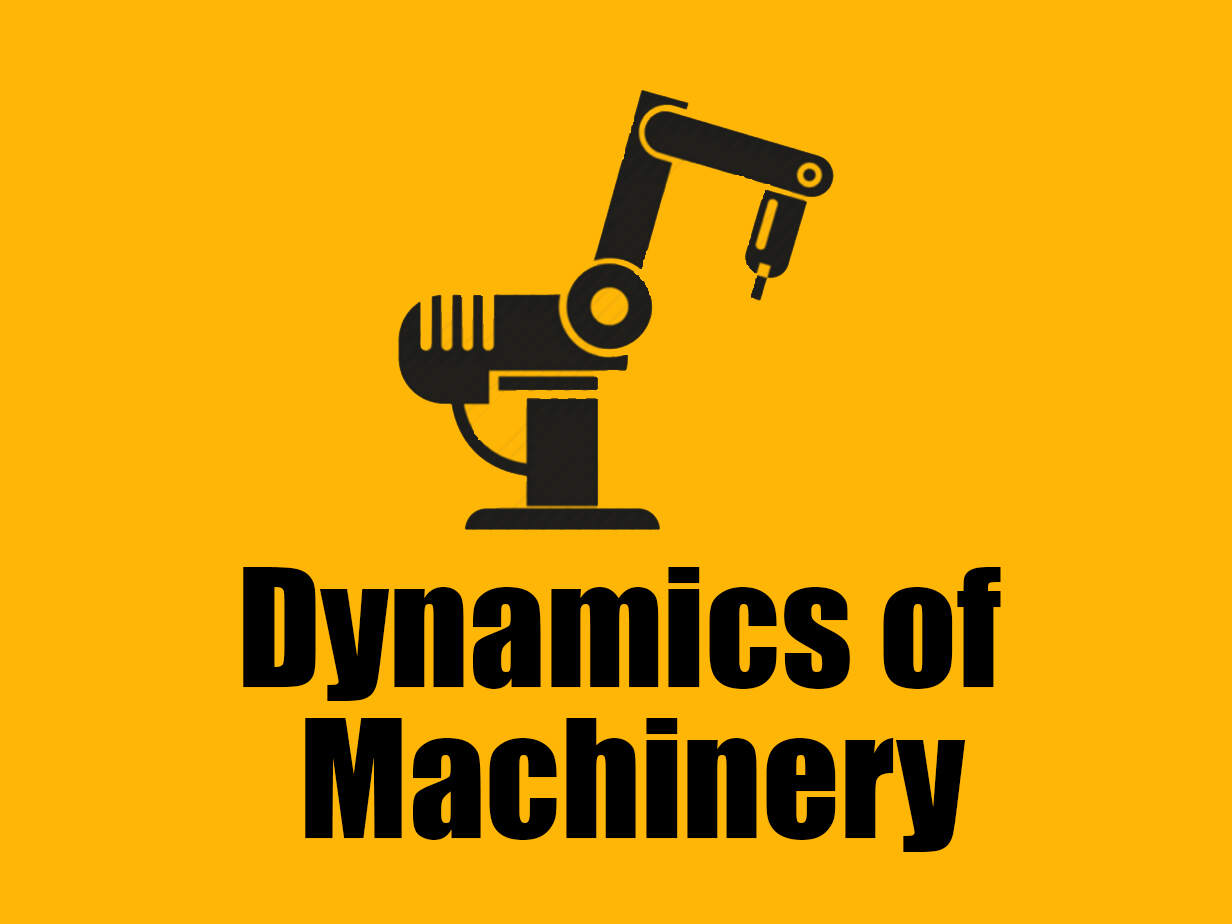Dynamics of Machinery
Objectives of the subject Dynamics of Machinery is to acquaint with working principles and applications of Governors / Gyroscope. To study static and dynamic force analysis in the mechanisms. To familiarise with basics of mechanical vibrations. To study the balancing of mechanical systems Outcomes: Learner will be able t0 Demonstrate working Principles of different types of governors and Gyroscopic effects on the mechanical systems. Illustrate basic of static and dynamic forces. Determine natural frequency of element/system. Determine vibration response of mechanical elements / systems. Design vibration isolation system for a specific application. Demonstrate basic concepts of balancing of forces and couples.
Module Governors and Gyroscopes consists of the following subtopics Governors: Introduction to Centrifugal and Inertia governors, Force analysis of governorsPorter and Hartnell governors, Performance characteristics of governors, Governors effort and power Gyroscope: Introduction, Gyroscopic couple and its effect on spinning bodies, naval ships during steering, pitching, rolling and their stabilization. Effect of gyroscopic and centrifugal couples, permissible speeds on curve paths, gyroscopic effect due to lateral misalignment of rigid disc mounted on shaft. Module Static and Dynamic force analysis, in slider crank mechanism (neglecting mass of connecting rod and crank), Engine force analysis, Turning moment on crank shaft. Dynamically equivalent systems, to convert rigid body in to two mass with and without correction couple. Basic Concepts of Vibration: Vibration and oscillation, causes and effects of vibrations, Vibration parameters – springs, mass, damper, damper models, Motion- periodic, non-periodic, degree of freedom, static equilibrium position, vibration classification, steps involved in vibration analysis. Free Undamped Single Degree of Freedom Vibration System: Longitudinal, transverse, torsional, vibration system, methods for formulation of differential equations by Newton, Energy, Lagrangian and Rayleigh’s method.
Module Free Damped Single Degree of Freedom Vibration System consists of the following subtopics Viscous damped system – under damped, critically damped, over damped; Logarithmic decrement; Coulomb’s damping. Equivalent Single Degree of Freedom Vibration System: Conversion of multi-springs, multi masses, multi-dampers into a single spring and damper with linear or rotational co-ordinate system, Introduction to free multi-degree of freedom vibration systems. Module Forced Single Degree of Freedom Vibratory System consists of the following subtopics Analysis of linear and torsional systems subjected to harmonic force excitation and harmonic motion excitation (excluding elastic damper).Vibration Isolation and Transmissibility: Force Transmissibility, motion transmissibility, typical isolators & mounts. Vibration Measuring instruments consists of the following subtopics Principle of seismic instruments, vibrometer, accelerometer – undamped and damped, Introduction to conditioning monitoring and fault diagnosis. Module Rotor Dynamics consists of the following subtopics Critical speed of single rotor, undamped and damped. Balancing: Static and Dynamic balancing of multi rotor system, balancing of reciprocating masses in In-line engines, V-engines (excluding other radial engines).
Suggested References Books for the subject by Mumbai university are as follows Theory of Machines Thomas Bevan CSB Publishers & Distributors 2. Theory of Machines by Jagdishlal Metropolitan Book New Delhi, Company, Daryaganj, Delhi 3. Theory of Machines by S.S.Ratan Tata McGraw Hill , New Delhi 4. Theory of Machines by P.L.Bellaney Khanna publication, NewDelhi 5. Theory of Machines and Mechanisms by John J Uicker, Gordon R Pennock and Joseph E Shigley, Oxford University Press 6. Theory of Vibration with Applications, by W. Thomson, 2nd edition, Pearson Education 7. Mechanical Vibrations by S.S.Rao, fourth edition, Pearson Education 8. Mechanical Vibraitons by G.K.Grover 9. Fundamentals of Mechanical Vibration by S.Graham Kelly, Tata McGraw Hll 10. Principles of Vibration by Benson H Tongue, 2nd Edition, Oxford University Press 11. Vibration Analysis by P. Srineevasan, TMH 12. Mechanical Vibrations- Schaum’s outline series, William W.Seto, McGraw Hill 13. Theory and Practice of Mechanical Vibrations by J S Rao and K Gupta, New Age International 14. Elements of Vibration Analysis by Leonard Meirovitch, McGrav- Hill, New York.
Prepare For Your Placements: https://lastmomenttuitions.com/courses/placement-preparation/

/ Youtube Channel: https://www.youtube.com/channel/UCGFNZxMqKLsqWERX_N2f08Q
Follow For Latest Updates, Study Tips & More Content!
 /lastmomenttuition
/lastmomenttuition
 / Last Moment Tuitions
/ Last Moment Tuitions
 / lastmomentdost
/ lastmomentdost
Course Features
- Lectures 14
- Quiz 0
- Duration 10 hours
- Skill level All levels
- Language Hindi
- Students 229
- Assessments Yes
Curriculum
- 1 Section
- 14 Lessons
- 26 Weeks
Expand all sectionsCollapse all sections
- index14
- 2.1Damped free vibration of viscous damping15 Minutes
- 2.2Damped vibrating system numerical9 Minutes
- 2.3elements of vibratory system8 Minutes
- 2.4Log Decrement Numerical part 19 Minutes
- 2.5Log Decrement Numerical part 25 Minutes
- 2.6Logarithmic Decrement numerical7 Minutes
- 2.7Natural Frequency of a System6 Minutes
- 2.8Numericals Based on U Tube and V Tube Manometer14 Minutes
- 2.9Simple Harmonic Motion9 Minutes
- 2.10Sums Based on Transverse and Trosional Vibration18 Minutes
- 2.11Transverse and Trosional Vibration15 Minutes
- 2.12Viscous Damping8 Minutes
- 2.13Basic Vibration Concept11 Minutes
- 2.14D’Alembert’s Principle and Energy Method13 Minutes
